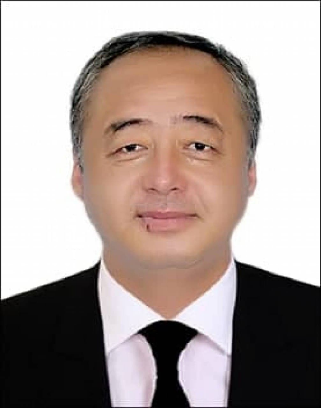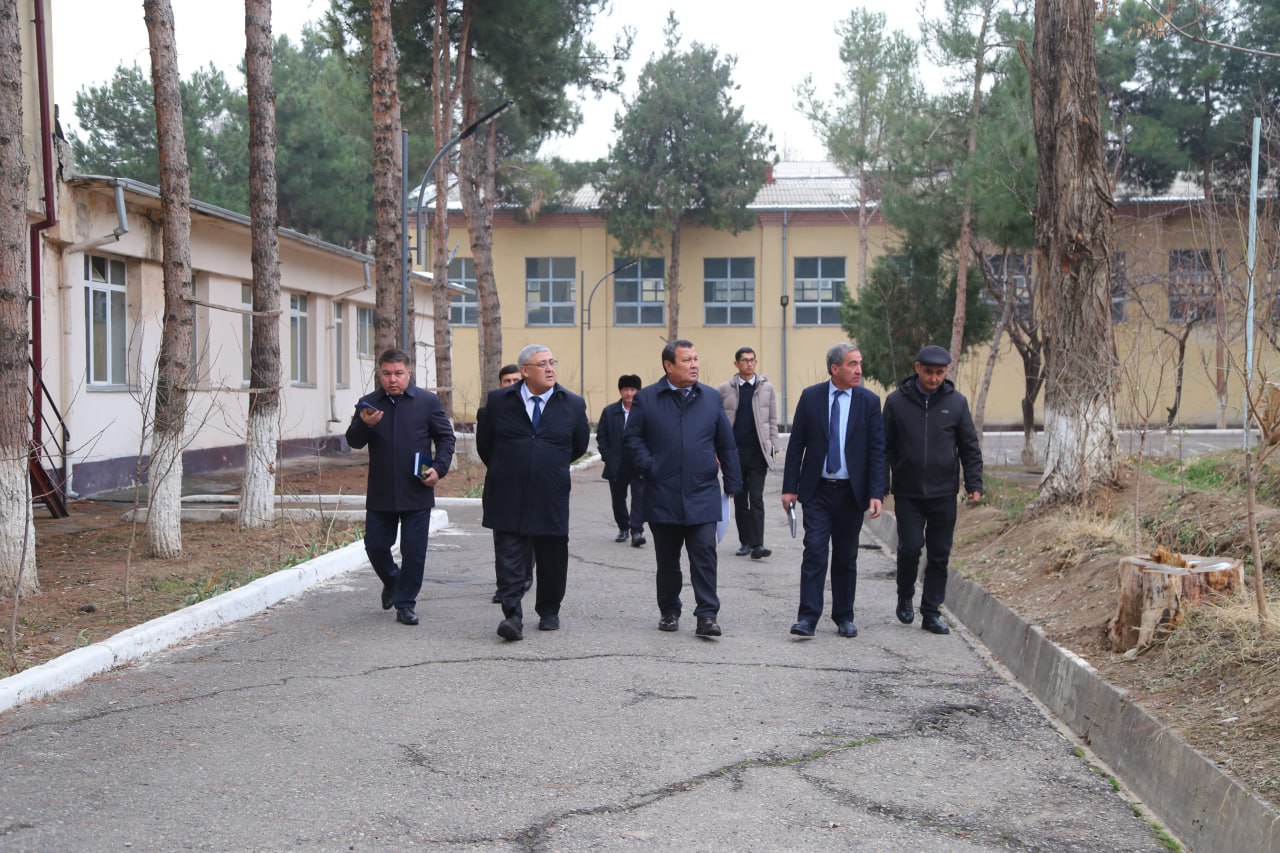
Bababekov Akbar – Head of department
100174, Universitet street 4, Olmazor district, Tashkent
Monday-Friday, 14:00 – 17:00
+998 97 422-62-79
e-mail: akbar.bababekov@mail.ru
History of the Department of Anthropology and Ethnology
Initially, prof. I.M. Due to Jabborov’s efforts, in 1983, with the permission of the Ministry of Higher Education, the term ethnography was added to the name of the Department of Ancient World and Medieval History. The department was headed by IM Jabborov, GB Nikolskaya, and the teacher T.O. Salimov was awarded the dissertation on ethnography, which he defended in 1986. In the late 80’s, when the number of departments of the Faculty of History reached 14, “Ethnography” began to work separately, and then joined the Department of Archeology.
Curriculum and plans of the Faculty of History “National Training Program”In particular, based on the views of the President of the Republic of Uzbekistan IA Karimov on June 26, 1998 at a meeting with a group of historians, scholars and journalists on the in-depth study and promotion of ethnic history of Uzbeks, “Ethnology of Uzbeks” We have included the subject “Fundamentals of Ethnology” in the curriculum of bachelors, and this work in 1999 allowed to restore the department of “Ethnology”. However, from 2010 to 2020, as a result of the merger of the faculty with the Department of Archeology, the attention to ethnological sciences decreased and reached the point of extinction.
Finally, according to the order of the Cabinet of Ministers of the Republic of Uzbekistan dated February 5, 2020 No 14-07 / 1-3796 “Practical In accordance with paragraph 8 of the “Action Plan” on August 30, 2020 by the decision of the 1st meeting of the Council of the National University of Uzbekistan, the department was reorganized under the name “Anthropology and Ethnology.”
General of the department The theme of the project is “Creation of the digital ethnographic atlas of Uzbekistan” I-ETNOATLAS “”. It plays an important role in the preparation of scientific and popular scientific publications on the history, culture, ethnic conflicts and their prevention, conflict resolution, as well as projects, events and festivals on “Uzbekistan – our common home.”
The Department of Anthropology and Ethnology works in close cooperation with the Center for Ethnology and Anthropology of the Institute of History of the Academy of Sciences of Uzbekistan, the Committee on International Relations and Friendship with Foreign Countries under the Cabinet of Ministers of Uzbekistan, the Laboratory of Applied Ethnology. Members of the department are working on a number of textbooks, scientific monographs. In particular, by the professor of the department TU Salimov, “Methods of ethnographic research.” Tashkent, Tashkent State University, 1993, “Drevniy Zaamin” (collective monograph). Tashkent, Fan. 1994, “Peoples of Australia and Oceania.” Study guide. Tashkent, Resource Center of the National University of Uzbekistan, 2003. -40 p., Vsemirnaya istoriya (7th grade). Textbook. Tashkent, 2004. 18 p.l., World History. 7th grade. textbook for secondary schools. Tashkent, 2009. 10 b.t., World History. 7th grade. textbook for secondary schools. Tashkent, 2013. 10 pp., World History. European countries in the V-XV centuries. Textbook. Tashkent, University Publishing House. 2014. 25 pp., World History (textbook for 7th graders in secondary schools). Tashkent, “National Encyclopedia of Uzbekistan” State Scientific Publishing House, 2017. 10 pages, Vsemirnaya istoriya (7th grade). Tashkent, State Scientific Publishing House “National Encyclopedia of Uzbekistan”, 2017. 10 p.l., Ancient Zaamin (History, archeology, numismatics, ethnography) collective monograph. Muharrir Publishing House, Tashkent, 2018. 0.8 pages, Nurata and Nurata people (monograph). “University”, Tashkent, 2019. 10 pages, Ethnology of the peoples of the world. Study guide. Tashkent, “Fan” publishing house, 2019. 10 pages, European countries in the V-XV centuries. Textbook. Tashkent, University Publishing House. 2014. 25 pp., World History (textbook for 7th graders in secondary schools). Tashkent, “National Encyclopedia of Uzbekistan” State Scientific Publishing House, 2017. 10 pages, Vsemirnaya istoriya (7th grade). Tashkent, State Scientific Publishing House “National Encyclopedia of Uzbekistan”, 2017. 10 p.l., Ancient Zaamin (History, archeology, numismatics, ethnography) collective monograph. Muharrir Publishing House, Tashkent, 2018. 0.8 pages, Nurata and Nurata people (monograph). “University”, Tashkent, 2019. 10 pages, Ethnology of the peoples of the world. Study guide. Tashkent, “Fan” publishing house, 2019. 10 pages, European countries in the V-XV centuries. Textbook. Tashkent, University Publishing House. 2014. 25 pp., World History (textbook for 7th graders in secondary schools). Tashkent, “National Encyclopedia of Uzbekistan” State Scientific Publishing House, 2017. 10 pages, Vsemirnaya istoriya (7th grade). Tashkent, State Scientific Publishing House “National Encyclopedia of Uzbekistan”, 2017. 10 p.l., Ancient Zaamin (History, archeology, numismatics, ethnography) collective monograph. Muharrir Publishing House, Tashkent, 2018. 0.8 pages, Nurata and Nurata people (monograph). “University”, Tashkent, 2019. 10 pages, Ethnology of the peoples of the world. Study guide. Tashkent, “Fan” publishing house, 2019. 10 pages, 10 b.t., Vsemirnaya istoriya (7th grade). Tashkent, State Scientific Publishing House “National Encyclopedia of Uzbekistan”, 2017. 10 p.l., Ancient Zaamin (History, archeology, numismatics, ethnography) collective monograph. Muharrir Publishing House, Tashkent, 2018. 0.8 pages, Nurata and Nurata people (monograph). “University”, Tashkent, 2019. 10 pages, Ethnology of the peoples of the world. Study guide. Tashkent, “Fan” publishing house, 2019. 10 pages, 10 b.t., Vsemirnaya istoriya (7th grade). Tashkent, State Scientific Publishing House “National Encyclopedia of Uzbekistan”, 2017. 10 p.l., Ancient Zaamin (History, archeology, numismatics, ethnography) collective monograph. Muharrir Publishing House, Tashkent, 2018. 0.8 pages, Nurata and Nurata people (monograph). “University”, Tashkent, 2019. 10 pages, Ethnology of the peoples of the world. Study guide. Tashkent, “Fan” publishing house, 2019. 10 pages,
The subjects taught at the department are in a separate form for bachelors and masters
| № | Subjects (bachelor) | Brief information about subjects |
| 1 | Ethnology | Ethnological description of the peoples of the world, anthropological, linguistic classification, economic types of economy, material and spiritual culture, settlements, traditional way of life and the importance of knowledge of religious beliefs. |
| 2. | Ethnology of Central Asia | To teach the theoretical foundations of knowledge about the ethnogenesis and ethnic history, economy and material and spiritual culture of the peoples of Central Asia, the basic concepts of Central Asian ethnology, the principles of classification and their application in practice. |
| 3. | World ethnology | To teach the ethnological classification of the peoples of the world, material and spiritual culture, economic characteristics, ethno-cultural processes, religious views, issues of modernization of cultures and their stages of development, their use for scientific purposes. |
| 4. | Ethnopsychology | Issues in the field of ethnopsychology required for ethnologists and anthropologists: history of ethnopsychological knowledge, currents in ethnopsychology, factors influencing the formation of ethnopsychological features, ethnos and individual, the composition of ethnic psychology, national customs and traditions, national feelings, tastes and their manifestations , ethnic conflicts and other similar issues. |
| 5. | Ethnopolitology | This subject covers the study of the concept, system and sources of ethnopolitics, politics, political power, the political system of society, political parties and political movements, important issues of domestic and foreign policy, as well as international political relations. |
| 6. | Ethnoconflictology | This subject covers issues in the field of conflictology that ethnologists and anthropologists need: the history of knowledge of conflictology, the causes, types, characteristics of conflicts, ethnic conflicts and ways to prevent and eliminate them, and other similar issues. |
| 7. | Ethnodemography | The role and importance of ethnodemography in the humanities, in particular in history. “Population science” and its inclusion in the social sciences in recent decades, the study of the dynamics of world population, the factors of population growth. Decision-making in the field of ethnodemography includes the study of existing scientific literature and modern theories, as well as ongoing research, best practices in the field, opinions, requirements and suggestions of staff. |
| 8. | Ethnological museology | This subject covers museums and their organization, study of museum objects, use of ethnological objects, scientific, objective study of ethnological data, coverage of current issues of ethnology, use of ethnological museum objects in scientific research, activities of museums. |
| 9. | Historical anthropology | To teach the goals and objectives of historical anthropology, ethnological classification of peoples, material and spiritual culture, economic characteristics, socio-cultural processes, religious views, issues of modernization of cultures and their stages of development. Moreover this subject covers the use for scientific purposes; the student must study historical data on the basis of scientific, historical, objectivity – the ability to independently study, study ethnological museum objects and Internet data, archaeological and ethnological sources; have the skills to use museum exhibits, descriptions of anthropological sources, materials from the funds of research institutes. |
| 10. | Ethnological research methods | Procedure and methods of ethnological expeditions, branches and schools of ethnological sciences, stages of formation of anthropology and ethnology as a science, decision-making on the use of collected field ethnological data, study of available scientific literature and field data and field research. The best practices accumulated in science cover issues such as the opinions, demands and suggestions of staff customers. |
| 11. | History of ethnological and anthropological thinking | The course “From the history of ethnological and anthropological thinking” provides students with information about the peoples of the world, research on the study of peoples, theories and concepts of ethnology and anthropology, the development of ethnological schools in Europe, America, Asia and their processes in society. k. assumes the assimilation of |
| 12 | Ethnogenesis and ethnic history of the Uzbek people | The role and importance of terms and concepts such as “ethnos”, “ethnic unity”, “ethnic group”, “people”, “nation” in the process of origin and formation of the Uzbek people. Their connection with the stages of development of society. Important aspects of the idea of ”ethnos”. Territorial language unity, ethnic, economic and cultural issues. |
| 13 | Social anthropology | Social anthropology is a field of socio-scientific knowledge. This science sees man as a creature with the ability to think biosocially, as an object in contact with the environment. Social anthropology applies its knowledge through objective analysis, using methods of analysis on the one hand, and a value approach in selecting its own recommendations on the other. This aspect is the practical significance of science and its usefulness for human beings. |
| 14 | Human evolution and prehistory | To give students a general understanding of the subject and tasks of human evolution and prehistoric science. A scientific approach to the study of anthropological, archaeological sources, monuments, theories of anthropogenesis. Anthropological chronology and chronology, the history of the development of the science of anthropogenesis, the growth of the scope of research, its stages, the formation of knowledge, skills and competencies related to the modern stage of anthropogenesis. |
| 15 | Uzbek ethnology and its historiography | Research on the study of the Uzbek people, knowledge of traditional material culture and customs, ceremonies, raising students’ historical thinking and worldview. |
| 16 | Visual anthropology | One of the disciplines of anthropology is the study of anthropological information through digital technologies, in particular through video, photo, and audio materials. It is a developed science field in the United States, Europe, and the Far East today. The daily life, material and spiritual culture of the people (people) is visually illuminated. |
| № | Subjects (master) | Brief information about subjects |
| 1 | Ethnopedagogy | Formation of ethnopedagogy as an independent science and its place in the system of sciences, history of views on ethnopedagogy, factors and means of folk pedagogy, Uzbek ethnopedagogy: features of family upbringing, folk traditions in child rearing, different features of socialization of boys and girls, traditional and modern social institutions , to introduce knowledge about the role of the community in traditional social education. |
| 2 | Cultural Anthropology | The study of groups of people living in close proximity to each other, living together in a particular area, belonging to a single political unit, common culture, language, etc .; cultural anthropology and its relationship to other disciplines; study of human and cultural relations; study of the origin (genesis), structure (morphology) and development (dynamics and diversity) of social organizations of cultures in a particular historical period. |
| 3 | Traditional spiritual culture of Uzbeks | The formation of the spiritual culture of the Uzbeks and its place in the system of sciences, the history of views on it, the factors and means of influencing the spiritual culture, as well as its place in the history of the people. |
| 4 | Ethnology of foreign countries | This subject covers the analysis of foreign research, theories and views in the field of ethnology. |
| 5 | Current issues of Central Asian ethnology | Giving ethnogenesis, ethnic history, anthropological and linguistic classification of the peoples of Central Asia; to provide knowledge about the traditional way of life, economy, housing, clothing and food of the peoples; The impact of the forced relocation of certain peoples by the Soviet government in the twentieth century on Central Asia and the problems of the current ethnocultural processes and their causes. |
| 6 | Ethnosociology | Mastering the scope and problems of ethnosociology, the study of the main categories of ethnicity, nation and nationality, interethnic relations and ethnic policy, as well as the formation of skills to analyze current ethno-sociological practice. |
| 7 | Toponymy (ethnotoponymy and ethnonymy) | Toponyms and their types, naming features, macrotoponyms, microtoponyms, oikonyms, urbonyms, hydronyms, hydronyms, oronyms, agronomy, zoonyms, phytonyms reveal the essence and significance. |
| 8 | Traditional material culture of Uzbeks | To give students a general idea of the subject and objectives of the course of traditional material culture, the history of science, the growth of research, its stages, sources and their importance in the study of cultural and historical processes, the study of historical development is the formation of skills. Also, to reveal the role and significance of the peculiarities of the traditional material culture of the Uzbeks in the life of the people. |
| Methods of ethnological research | To develop students’ knowledge, skills and competencies in organizing and conducting ethnographic expeditions. Also, the organization and conduct of ethnographic expeditions to cover the topic of the master’s dissertation, teaching the use of field data. |
About researchers and scientific work
| № | The research professor’s full name | Academic degree, title | The topic of the dissertation |
| 1 | Bababekov Akbar Dovurbaevich | PhD, Head teacher | “Ethno-economic processes in the mountainous regions of Uzbekistan in the XX century” (on the example of Sangzor-Zaamin region) |
| 2 | Ubaydullaeva Barno Mashrabjonovna | Docent | “Uzbek traditions and innovations in child rearing” (second half of the XX century – early XXI century) |
| 3 | Ashirov Adham Azimbaevich | Professor | “The traditional way of life of the Uzbek people – ancient religious beliefs” (based on materials from the Fergana Valley. |
| 4 | Narziev Nabijon Narzullaevich | Head teacher | “Traditional culture of Uzbek communication” (historical and ethnological research) |
| 5 | Abduzohirov Ravshan Hamdamovich | Teacher | “Migration processes in the era of globalization (on the example of Kashkadarya region)” |
| 6 | Babaraximov Turon Gulomnazarovich | Teacher | “Visual anthropological image of modern Uzbek culture (On the example of Tashkent city) ” |
| 7 | Anorkulov Sayfiddin Muxitdinovich | PhD., Teacher | “Socio-cultural processes in the industrial cities of the Tashkent oasis” |
Information on local and foreign partners
The department cooperates with the Institute of History of the Russian Academy of Sciences, Hankuk University of South Korea, the Institute of Emerging Economics of Japan, Chubu, Japan, and the University of California in the United States.
The structure of the department
| № | Name | Position |
| Bababekov Akbar Dovurbaevich | PhD., The head of department | |
| Ubaydullaeva Barno Mashrabjonovna | Docent | |
| Ashirov Adham Azimbaevich | Professor | |
| Narziev Nabijon Narzullaevich | Head teacher | |
| Abduzohirov Ravshan Hamdamovich | Teacher | |
| Babaraximov Turon Gulomnazarovich | Teacher | |
| Anorkulov Sayfiddin Muxitdinovich | PhD., Teacher | |
| Abdurahmanova Kamolakhon Ravshanjon qizi | Cabinet manager | |
Circles – There is a circle of “young ethnologists”.


